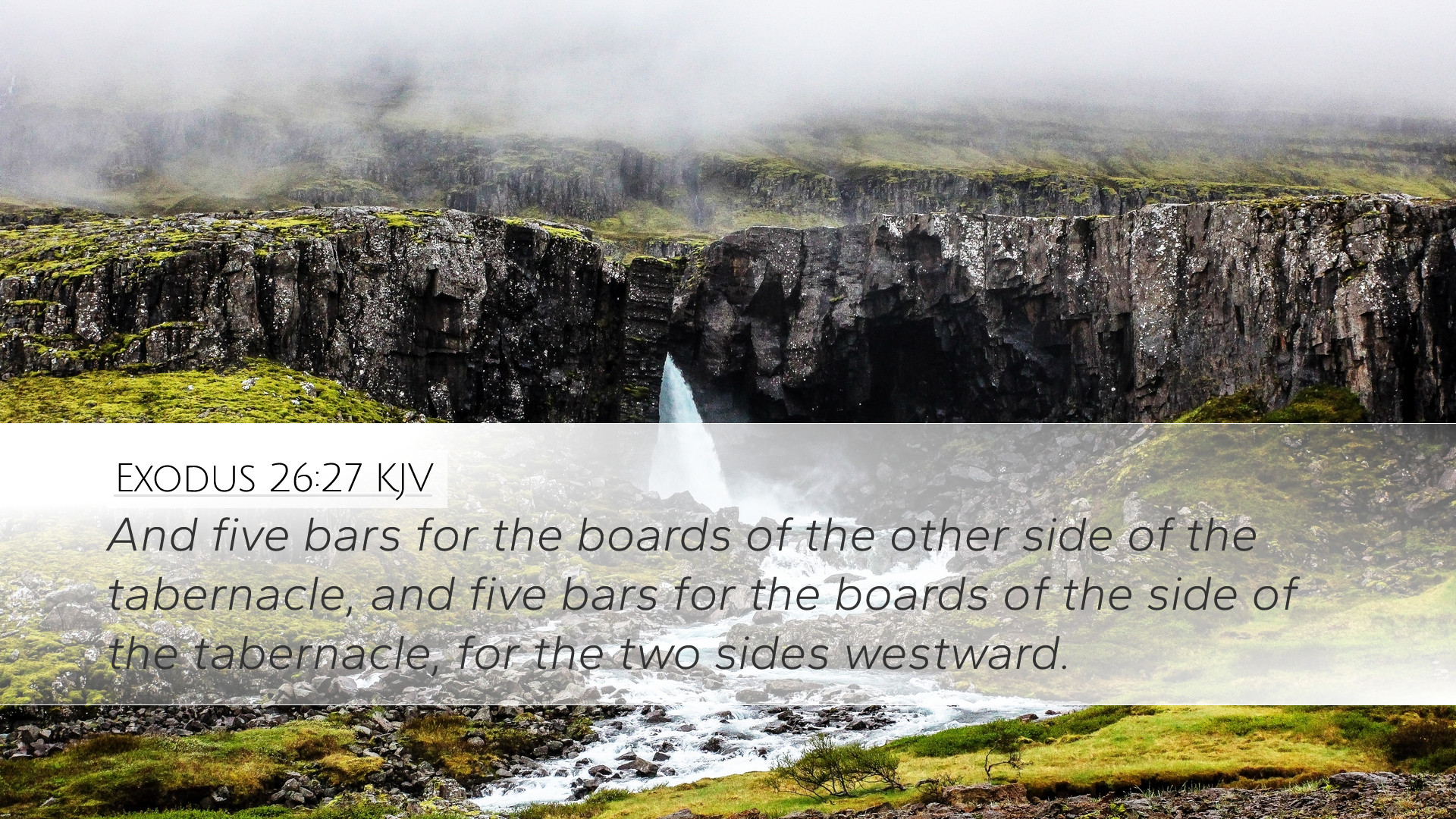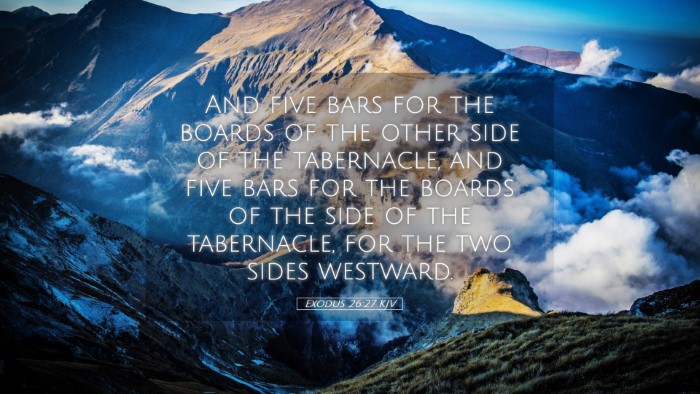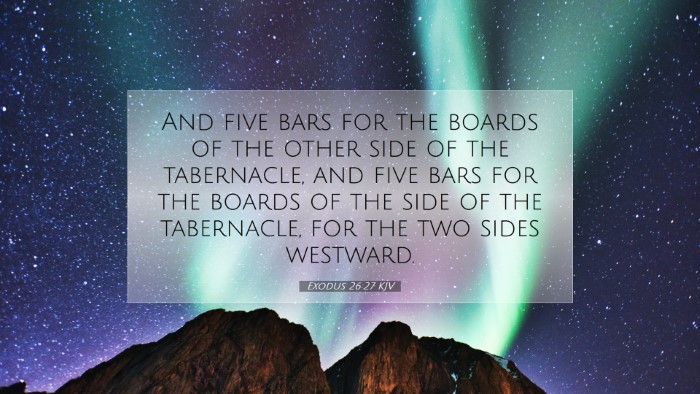Commentary on Exodus 26:27
Bible Verse: Exodus 26:27 - "And the five bars for the boards of the one side of the tabernacle, and the five bars for the boards of the other side of the tabernacle, and the five bars for the boards of the side of the tabernacle for the westward." (KJV)
Introduction
This verse is situated within the larger context of God's instructions for the construction of the Tabernacle, which served as a portable dwelling place for the Divine among the Israelites during their journey through the wilderness. The design specifics carry deep theological implications, reflecting the nature of God’s presence and the relationship between Him and His people.
Structural Significance
Exodus 26:27 highlights the functionality and craftsmanship involved in constructing the Tabernacle, particularly mentioning the five bars that support its structure. The number five is significant in biblical numerology, often associated with grace, and it is essential in understanding how God’s grace sustains His dwelling among His people.
- Symbol of Strength: The bars represent strength and stability. In a spiritual sense, Christ is the ultimate 'bar' that holds everything together, offering stability to believers.
- Covenantal Representations: The mention of boards signifies the faith community. Just as the bars unite the boards, so do the covenant and teachings unite the faithful in their relationship with God.
Theological Insights
In the construction of the Tabernacle, the Lord gave specific directions that painted a larger picture of eternal truths. Various commentators have emphasized the underlying theological themes.
- Presence of God: The Tabernacle is a symbol of God’s desire to dwell among His people. The meticulous details underscore the holiness required for divine encounters and the accessibility to God through specific means.
- Unity and Order: The organization involving bars and boards reflects God's order in both creation and in worship. It teaches believers to maintain both personal and corporate order in their worship practices.
Insights from Commentators
Matthew Henry
Matthew Henry views the bars as a means of securing the structure of the Tabernacle and metaphorically, the stability of faith in a believer. He emphasizes the importance of holding firm to the doctrines and practices that uphold the faith community, just as the bars hold the boards of the Tabernacle together.
Albert Barnes
Albert Barnes highlights the unified nature of the Tabernacle's construction. He notes that the alignment of the bars and boards serves not only a structural purpose but also signifies the alignment of believers in faith. The imagery reflects the interconnectedness of believers in Christ, forming a spiritual house where God dwells.
Adam Clarke
Adam Clarke points out the significance of the number five, arguing that it symbolizes grace and divine favor. He connects this notion to the New Testament understanding of grace, indicating that just as the bars were essential for the Tabernacle’s stability, grace is essential for the believer’s walk with God.
Practical Application
Understanding the structural elements of the Tabernacle, as detailed in Exodus 26:27, provides practical insights for contemporary faith communities:
- Building Together: Just as the bars hold the boards together, churches are designed to work in unity. Believers should aim to strengthen one another through service and fellowship.
- Emulating Divine Order: The meticulous design of the Tabernacle invites believers to reflect on the importance of order in worship and community life.
- Recognizing Grace: Reflecting on the grace that sustains life, believers should practice gratitude for God’s presence and His sustaining power among them.
Conclusion
Exodus 26:27 serves as a reminder of God’s intention to dwell among His people and the importance of community, structure, and divine grace in that relationship. The insights drawn from the public domain commentaries enrich our understanding of this verse and its implications for both personal faith and church life.


